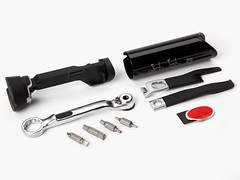MY TOOLKIT
It is pretty easy to say that I help people move with increased comfort and ease. For some that is good enough. Others really want to know HOW it is that I do that. Below is an attempt to explain in words something that begs to be experienced.
************************************************************************
What do you do he asks?
Well- I help people move with more ease and effectiveness.
So- what do you do he asks?
Well, if someone has pain my work often helps with that. If someone has a specific activity that they would like to do better and/or with less discomfort I often help accomplish both at the same time. That brings to mind a couple of musicians I have been working with as well as an equestrian. If a child has special needs and requires support in developing basic movement skills, or if an adult with a neurologic condition needs to relearn those, I can help with that too.
So- what do you do he asks?
Oh – I get it. What you really are asking I think is what tools do I use to do what I just talked about. I could put those into three categories – assessment, hands on work, and guided movement. I’ll say a bit more about all three.
ASSESSMENT
A client, or in some cases a caregiver (parent or other) comes with a client and we talk about what brought them to see me. What is working well and what not so? What would they like to achieve working with me? How would they benefit if that that happened?
With nearly thirty years in the movement business I get a lot of information just casually observing someone. This might suggest a few easy movements I might want to see them do. I also might very gently move the client to sense their current preferences that they may or may not be aware of.
Sometimes folks bring musical instruments, golf clubs or other tools and I can observe them in action. Occasionally I do an onsite visit. Usually this is to assess ergonomics.
After we have a short conversation about what I discovered and how I think I can help.
HANDS ON WORK
The hands on work I do is gentle and done fully clothed. My intent is not to mechanically “fix” your body, but rather provide you with a special kind of kinesthetic information that allows you to notice how you might improve how you execute movement. The work will be comfortable. Just enjoy rather than mentally trying to “figure it out”.
Examples might be helping you sense where you are holding too much muscular tension or how you are not using your skeleton in a way that supports you well. Particularly for a child with special needs, but also with others, it is critical to help development certain foundational relationships. Feldenkrais folks call this hands on work Functional Integration (FI). Anat Baniel Method folks call it Functional Synthesis (FS). I have both certifications.
GUIDED MOVEMENT
This is verbally guided with occasional hands on help if it seems appropriate. The movements I choose are not traditional exercises, but rather sequences that support the same easy and effective coordination that I help develop with the hands on work. The intention is that you move slowly and with attention to the feeling produced by the movement. It is this sort of attention that neuroscientists tell us helps you improve your movement without strain or difficult exercise. Feldenkrais folks call this Awareness through Movement (ATM) and Anat Baniel calls it Transformational Movement (TML- for Transformational Movement Lesson).
I use bits of this kind of movement in my private sessions and also teach longer lessons to groups of folks.
P.S. My work is in its essence experiential. My attempt to describe it in words does not substitute for experiencing it. If you really want to learn more about my toolkit I encourage you to take advantage of my $25 tastes or a group offering.

